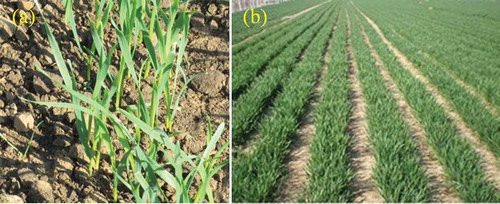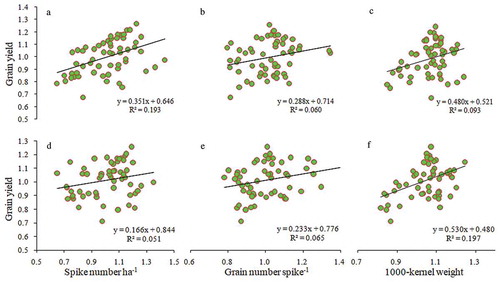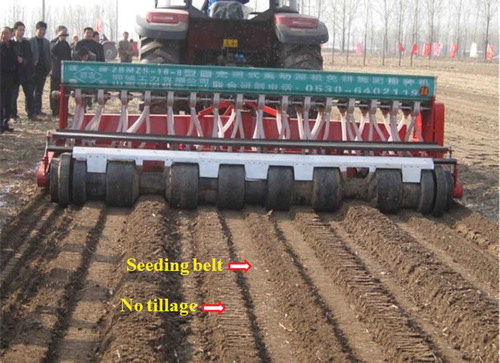Figures & data

Figure 1. Wheat plants grown in a belt-precision planting system showing strong and uniformly distributed seedlings (a) and the planting configuration and wide seedling belt (b).

Figure 2. Relationships between the yield and yield components of wheat under conventional (a, b, and c) and belt-precision (d, e, and f) planting systems. Under the belt-precision planting system, the highest correlation coefficient is observed between the grain yield and the number of spikes per unit area, whereas in conventional planting, the highest correlation coefficient is observed between the grain yield per unit area and the 1000-kernel weight. Each point is relative to the mean of the data from each planting pattern.

Table 1. Direct and indirect effects of yield components on wheat grain yield in conventional line and belt-precision planting systems as indicated by path coefficients. Total effects are the sum of the direct and indirect effects.
Figure 3. Belt-planting in a strip tillage system showing direct wheat sowing immediately after maize harvest using a strip rotary drill.

Table 2. Comparison of grain yield, yield components and flour processing quality of wheat grown in conventional line and BPST planting systems. Data were collected from experiments using a large plot size (667 m2 for each treatment) in dry regions of Shanxi province (Zhang et al., Citation2018).